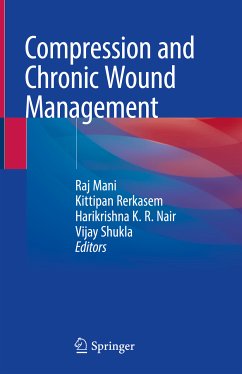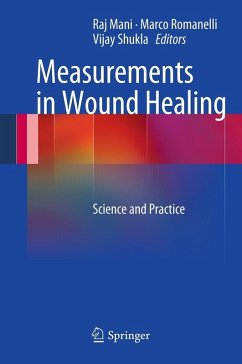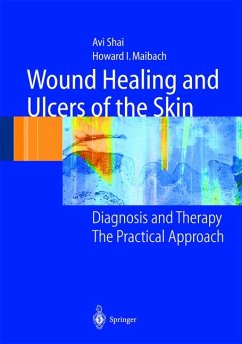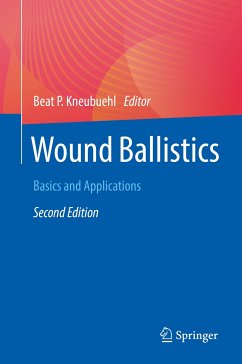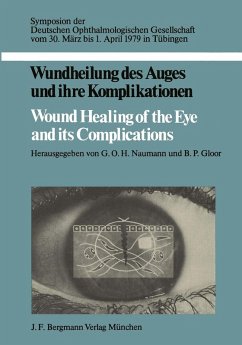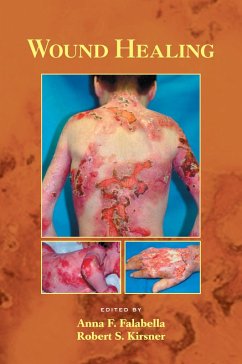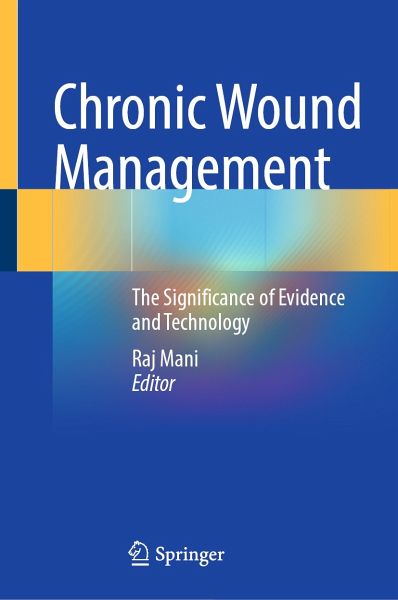
Chronic Wound Management (eBook, PDF)
The Significance of Evidence and Technology
Redaktion: Mani, Raj
Versandkostenfrei!
Sofort per Download lieferbar
80,95 €
inkl. MwSt.
Weitere Ausgaben:

PAYBACK Punkte
40 °P sammeln!
This book describes how chronic wounds follow a completely different healing trajectory to acute wounds and discusses the factors associated with these poor healing trajectories. These factors include age, chronic inflammation, phenotypic changes in such cells as macrophages, fibroblasts, and keratinocytes, colder, alkaline wound milieu, wound related hypoxemia, and diabetes. Other factors implicated include reperfusion injury, poor patient compliance, presence of undiagnosed and therefore unmanaged biofilms and wound pain. The past decades have yielded reliable evidence-based guidelines and s...
This book describes how chronic wounds follow a completely different healing trajectory to acute wounds and discusses the factors associated with these poor healing trajectories. These factors include age, chronic inflammation, phenotypic changes in such cells as macrophages, fibroblasts, and keratinocytes, colder, alkaline wound milieu, wound related hypoxemia, and diabetes. Other factors implicated include reperfusion injury, poor patient compliance, presence of undiagnosed and therefore unmanaged biofilms and wound pain.
The past decades have yielded reliable evidence-based guidelines and standardized care, but the healing of diabetic foot wounds continues to be unpredictable notwithstanding these advances, while the recurrence rates are also high. The benefits of technology in wound diagnosis are evidence-based and the use of this technology also features in guidelines. However, the same argument cannot be extended to adjuvant devices to facilitate wound closure even though many devices potentially benefit wound healing.
Chronic Wound Management describes how innovation is based on technology that itself informs evidence, the gap between the evidence available, the performance of technology and how do we bridge this gap. It reviews the lessons learnt from the COVID-19 pandemic and whether traditional medicine systems offer us real or imaginary benefits. Consequently, this book is an important addition to the literature in the area and an essential read for all healthcare professionals working with these patients.
Dieser Download kann aus rechtlichen Gründen nur mit Rechnungsadresse in A, B, BG, CY, CZ, D, DK, EW, E, FIN, F, GR, HR, H, IRL, I, LT, L, LR, M, NL, PL, P, R, S, SLO, SK ausgeliefert werden.
Alle Preise in Euro und inkl. der gesetzl. MwSt. | Innerhalb Deutschlands liefern wir preisgebundene Bücher versandkostenfrei. Weitere Informationen: bitte hier klicken
Support
Bitte wähle dein Anliegen aus:
Rechnungen
Bestellstatus
Retourenschein
Storno




